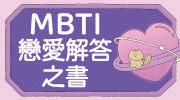Core Concepts In Supramolecular Chemistry And Nanochemistry
商品資訊
ISBN13:9780470858677
出版社:John Wiley & Sons Inc
作者:Steed
出版日:2007/04/20
裝訂/頁數:平裝/320頁
商品簡介
作者簡介
目次
相關商品
商品簡介
Supramolecular chemistry and nanochemistry are two strongly interrelated cutting edge frontiers in research in the chemical sciences. The results of recent work in the area are now an increasing part of modern degree courses and hugely important to researchers.
Core Concepts in Supramolecular Chemistry and Nanochemistry clearly outlines the fundamentals that underlie supramolecular chemistry and nanochemistry and takes an umbrella view of the whole area. This concise textbook traces the fascinating modern practice of the chemistry of the non-covalent bond from its fundamental origins through to it expression in the emergence of nanochemistry.
Fusing synthetic materials and supramolecular chemistry with crystal engineering and the emerging principles of nanotechnology, the book is an ideal introduction to current chemical thought for researchers and a superb resource for students entering these exciting areas for the first time. The book builds from first principles rather than adopting a review style and includes key references to guide the reader through influential work.
* supplementary website featuring powerpoint slides of the figures in the book
* further references in each chapter
* builds from first principles rather than adopting a review style
* includes chapter on nanochemistry clear diagrams to highlight basic principles
* Discusses the highly topical area of nanotechnology
* Brings together the many threads of supramolecular chemistry
* Includes a supplementary website with simulations, full color structures, problems and answers
* Provides key references at the beginning of each section and a comprehensive glossary of terms and definitions at the end of each chapter
* First concise text aimed at students
* Builds from first principles rather than ‘review style’
* Clear diagrams to highlight basic principles
Core Concepts in Supramolecular Chemistry and Nanochemistry clearly outlines the fundamentals that underlie supramolecular chemistry and nanochemistry and takes an umbrella view of the whole area. This concise textbook traces the fascinating modern practice of the chemistry of the non-covalent bond from its fundamental origins through to it expression in the emergence of nanochemistry.
Fusing synthetic materials and supramolecular chemistry with crystal engineering and the emerging principles of nanotechnology, the book is an ideal introduction to current chemical thought for researchers and a superb resource for students entering these exciting areas for the first time. The book builds from first principles rather than adopting a review style and includes key references to guide the reader through influential work.
* supplementary website featuring powerpoint slides of the figures in the book
* further references in each chapter
* builds from first principles rather than adopting a review style
* includes chapter on nanochemistry clear diagrams to highlight basic principles
* Discusses the highly topical area of nanotechnology
* Brings together the many threads of supramolecular chemistry
* Includes a supplementary website with simulations, full color structures, problems and answers
* Provides key references at the beginning of each section and a comprehensive glossary of terms and definitions at the end of each chapter
* First concise text aimed at students
* Builds from first principles rather than ‘review style’
* Clear diagrams to highlight basic principles
作者簡介
Jonathan? W. Steed, Department of Chemistry, Durham University, UK.
David R. Turner, Department of Chemistry, Monash University, Australia.
Karl J. Wallace, Department of Chemistry and Biochemistry, The University of Southern Mississippi, USA.
目次
Preface.
About the authors.
1 Introduction.
1.1 What is supramolecular chemistry?
1.2 Selectivity.
1.3 Supramolecular interactions.
1.4 Supramolecular design.
References.
Suggested further reading.
2 Solution host–guest chemistry.
2.1 Introduction: guests in solution.
2.2 Macrocyclic versus acyclic hosts.
2.3 Cation binding.
2.4 Anion binding.
2.5 Metal-containing receptors.
2.6 Simultaneous cation and anion receptors.
2.7 Neutral-molecule binding.
2.8 Supramolecular catalysis and enzyme mimics.
References.
3 Self-assembly.
3.1 Introduction.
3.2 Biological self-assembly.
3.3 Ladders, polygons and helices .
3.4 Rotaxanes, catenanes and knots.
3.5 Self-assembling capsules.
References.
4 Solid-state supramolecular chemistry.
4.1 Introduction.
4.2 Zeolites.
4.3 Clathrates.
4.4 Clathrate hydrates.
4.5 Crystal engineering.
4.6 Coordination polymers.
References.
5 Nanochemistry.
5.1 Introduction.
5.2 Nanomanipulation.
5.3 Molecular devices.
5.4 Self-assembled monolayers (SAMs).
5.5 Soft lithography.
5.6 Nanoparticles.
5.7 Fullerenes and nanotubes.
5.8 Dendrimers.
5.9 Fibres, gels and polymers.
5.10 Nanobiology and biomimetic chemistry.
References.
Index.
About the authors.
1 Introduction.
1.1 What is supramolecular chemistry?
1.2 Selectivity.
1.3 Supramolecular interactions.
1.4 Supramolecular design.
References.
Suggested further reading.
2 Solution host–guest chemistry.
2.1 Introduction: guests in solution.
2.2 Macrocyclic versus acyclic hosts.
2.3 Cation binding.
2.4 Anion binding.
2.5 Metal-containing receptors.
2.6 Simultaneous cation and anion receptors.
2.7 Neutral-molecule binding.
2.8 Supramolecular catalysis and enzyme mimics.
References.
3 Self-assembly.
3.1 Introduction.
3.2 Biological self-assembly.
3.3 Ladders, polygons and helices .
3.4 Rotaxanes, catenanes and knots.
3.5 Self-assembling capsules.
References.
4 Solid-state supramolecular chemistry.
4.1 Introduction.
4.2 Zeolites.
4.3 Clathrates.
4.4 Clathrate hydrates.
4.5 Crystal engineering.
4.6 Coordination polymers.
References.
5 Nanochemistry.
5.1 Introduction.
5.2 Nanomanipulation.
5.3 Molecular devices.
5.4 Self-assembled monolayers (SAMs).
5.5 Soft lithography.
5.6 Nanoparticles.
5.7 Fullerenes and nanotubes.
5.8 Dendrimers.
5.9 Fibres, gels and polymers.
5.10 Nanobiology and biomimetic chemistry.
References.
Index.
主題書展
更多
主題書展
更多書展今日66折
您曾經瀏覽過的商品
購物須知
外文書商品之書封,為出版社提供之樣本。實際出貨商品,以出版社所提供之現有版本為主。部份書籍,因出版社供應狀況特殊,匯率將依實際狀況做調整。
無庫存之商品,在您完成訂單程序之後,將以空運的方式為你下單調貨。為了縮短等待的時間,建議您將外文書與其他商品分開下單,以獲得最快的取貨速度,平均調貨時間為1~2個月。
為了保護您的權益,「三民網路書店」提供會員七日商品鑑賞期(收到商品為起始日)。
若要辦理退貨,請在商品鑑賞期內寄回,且商品必須是全新狀態與完整包裝(商品、附件、發票、隨貨贈品等)否則恕不接受退貨。
























